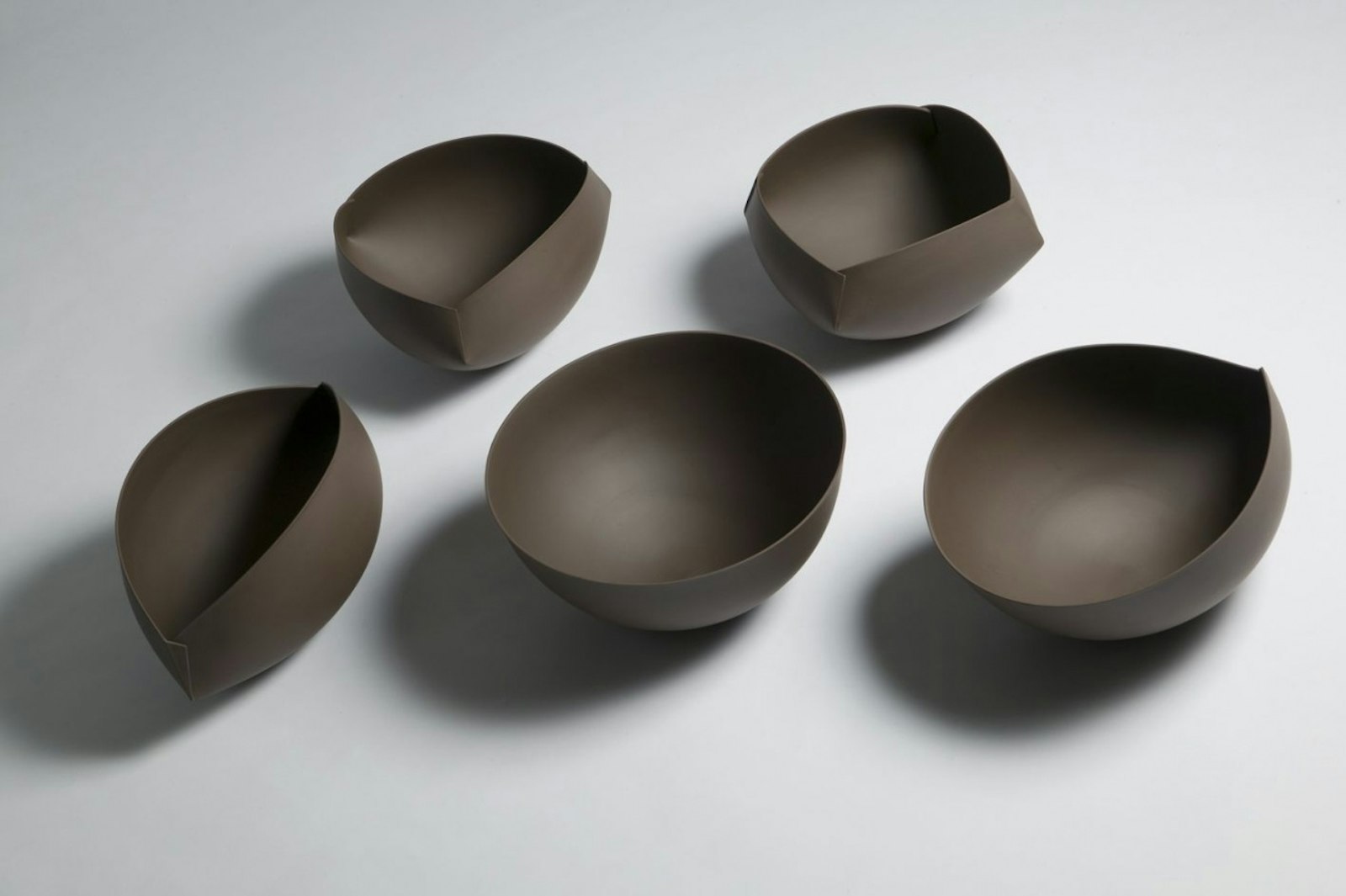de Velde
Étude Géometrique
In Etude Géométrique, by making use of three dimensional and origami techniques Ann Van Hoey explores the boundaries of combining a circle with other geometric forms like the square, triangle, the straight line and the decimal point.
Thanks to the extreme thinness of the clay plates, purity of form is retained and the perception of the circle, the starting point, is never lost. The latter is certainly also achieved because of the deliberately minimalist finish, without any glaze or clay slip, and the refinement of the rim. The installation is a series of forms with the hemisphere or half bowl as the basis (1), which then gets four corners, an unexpected marriage between a circle and a square (2), or a circle which absorbs a triangle (3), or yet another connection of two points that takes the form of an eye, the 'bi-angle' (4), or the ultimate challenge, a combination of a circle with a point in the form of a 'mono angle' or droplet, the return of the source of all life, water (5).

